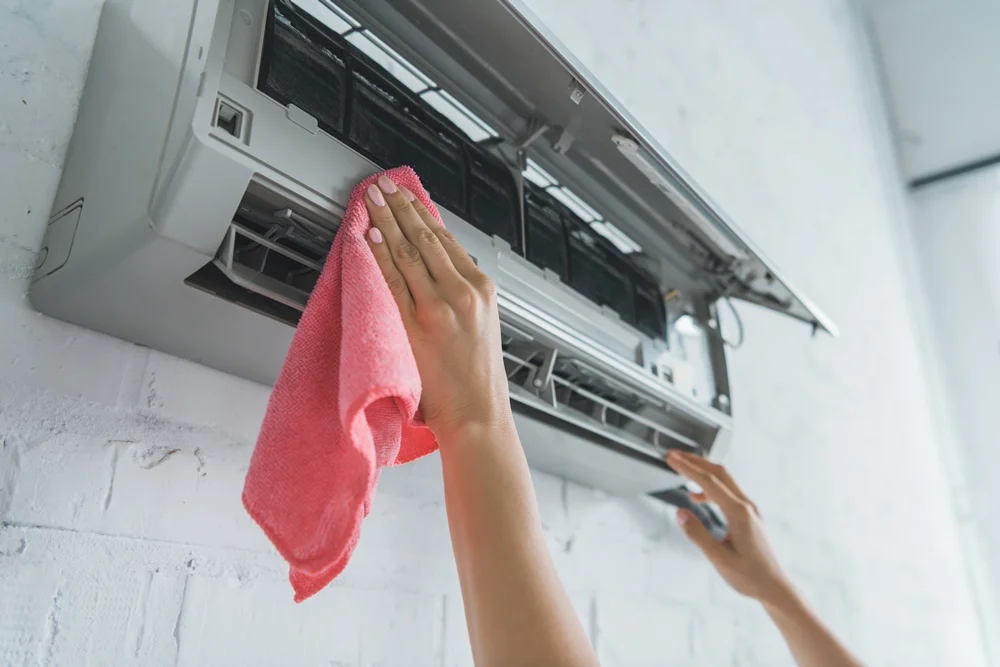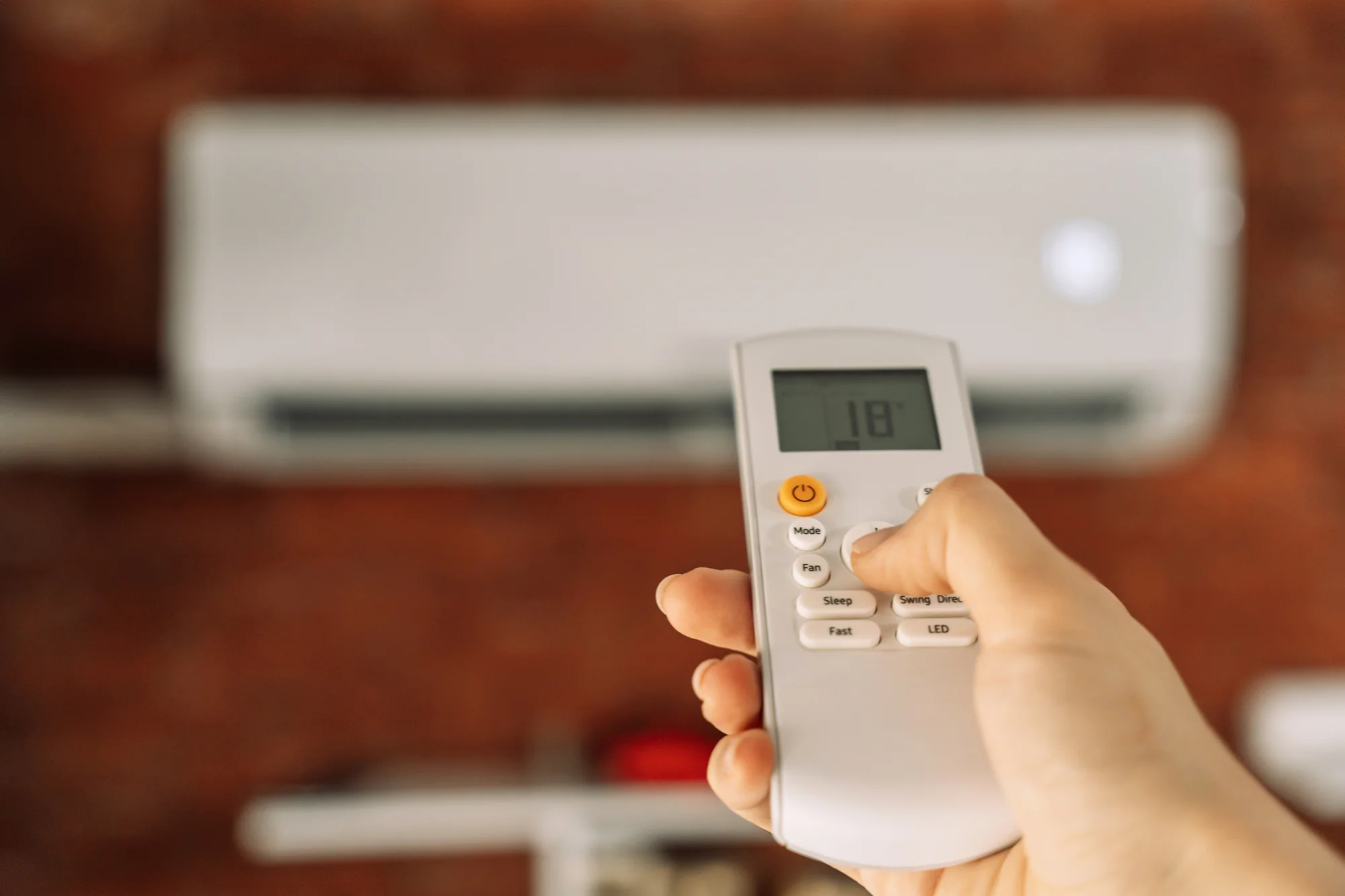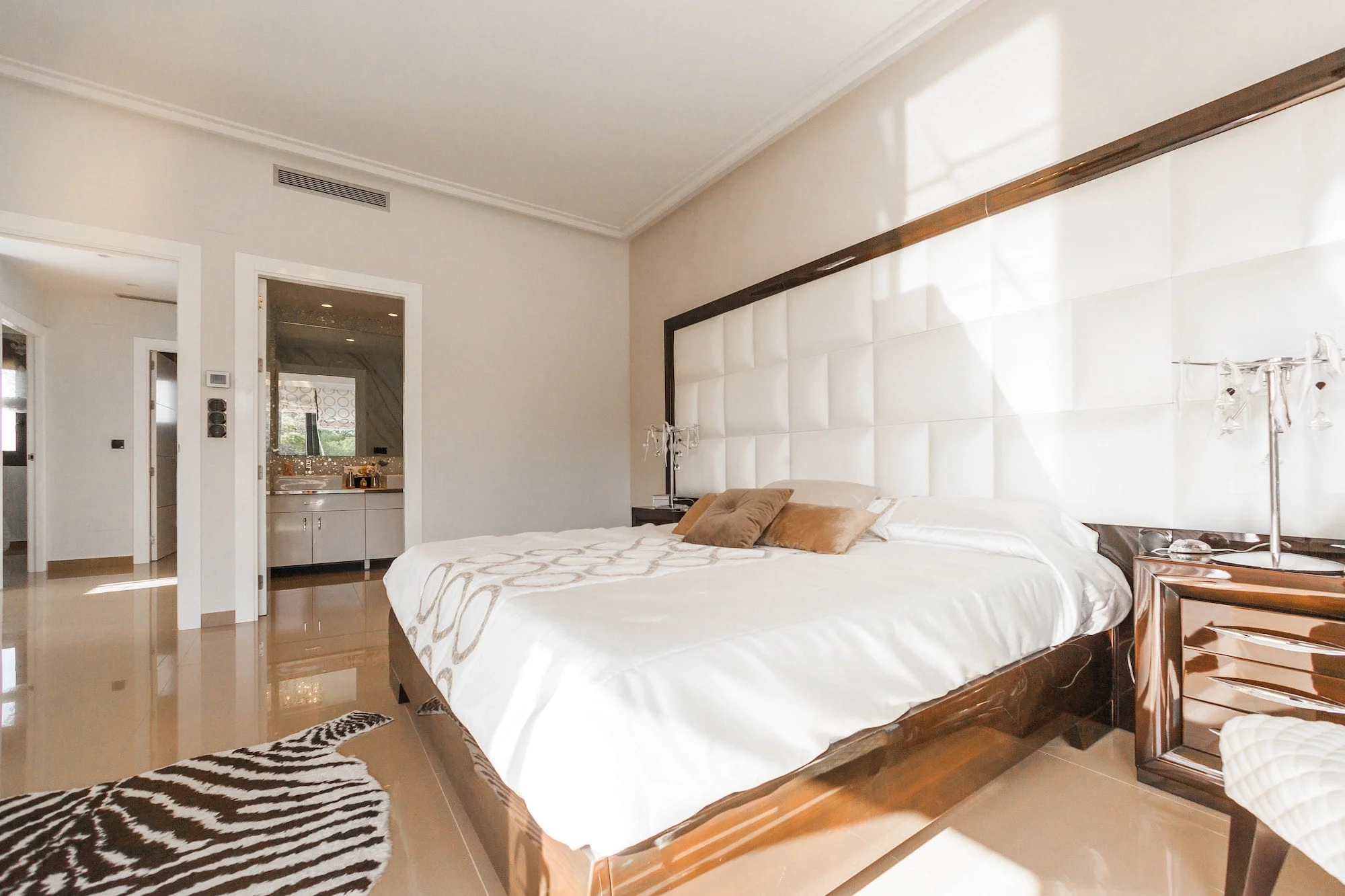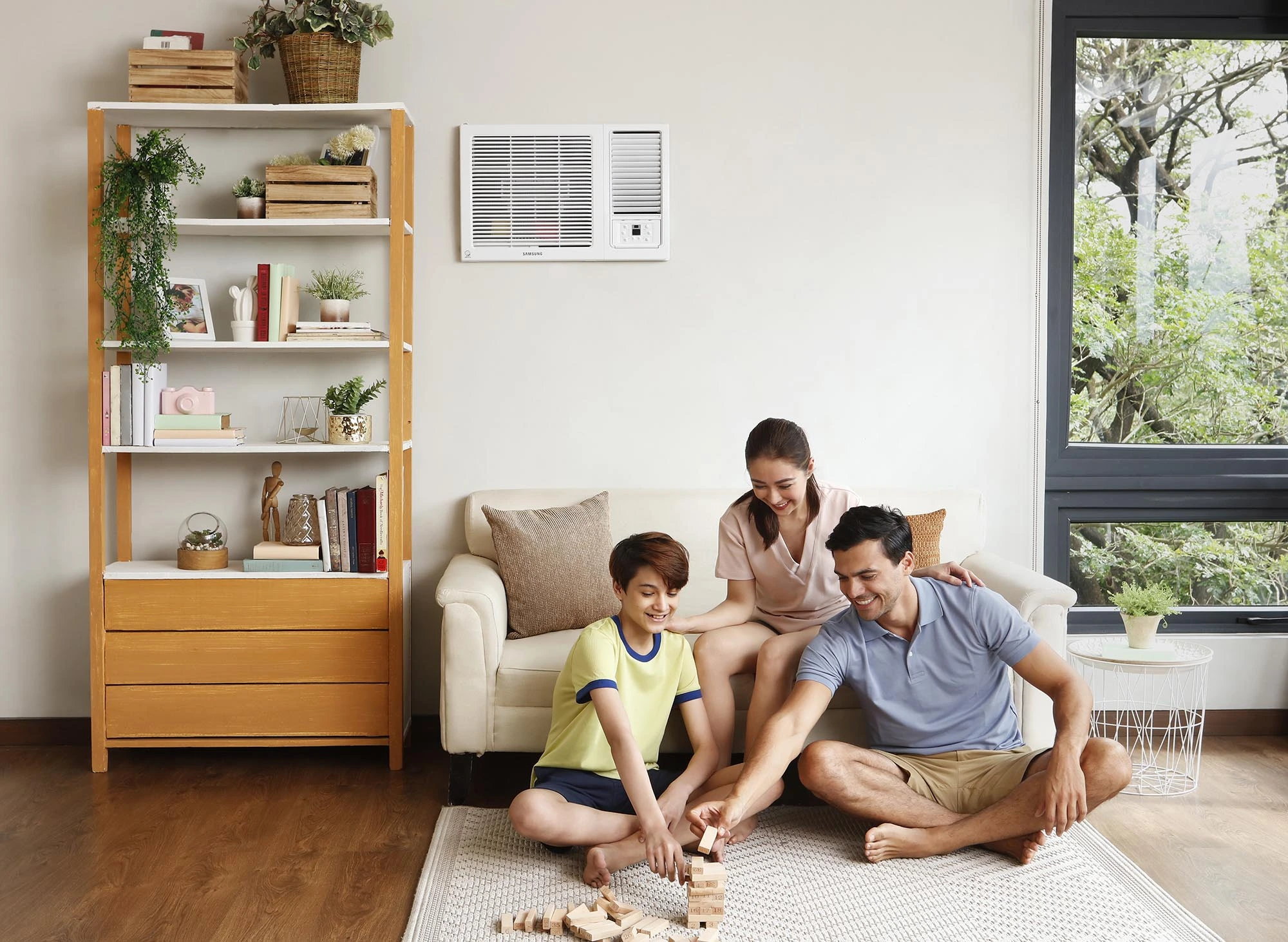It’s a familiar summer ritual: the sun beats down, the humidity climbs, and with a sigh of relief, you reach for the aircon remote. That blast of cool, dry air is a modern miracle. But then, at the end of the month, the electric bill arrives, and a new wave of heat washes over you—this one fueled by financial panic.
If this scenario feels all too real, you’re not alone. Air conditioning accounts for a staggering 12% of total home energy costs in the average American household, and in hot, humid climates, that figure can skyrocket to 50% or more. For many, it feels like a brutal trade-off: comfort versus cost.
But what if you didn’t have to choose? What if you could stay perfectly cool while significantly reducing the energy consumption of your AC unit?
The good news is, you absolutely can. It’s not about suffering in silence or resorting to a handheld fan. It’s about moving from a passive user to a strategic master of your home’s climate. By understanding a few key principles and implementing some professional-grade habits, you can transform your air conditioner from a budgetary villain into an efficient ally.
Forget the basic advice you’ve heard a thousand times. Let’s dive into the seven pro tips that will help you chill out and save big.
1. Master the Thermostat: It’s Not Just About a Number
This is the cornerstone of AC efficiency, but most people misunderstand it. The goal isn’t to find one “perfect” temperature and lock it in 24/7. The goal is to manage temperature strategically.
The Magic of the 7-10° F Rule
The U.S. Department of Energy states that you can save up to 10% a year on cooling by simply turning your thermostat back 7-10°F for 8 hours a day from its normal setting. Why? Because your AC doesn’t have to work as hard to maintain a small temperature differential between the inside and the scorching outside.
The Pro Strategy: Get a Smart or Programmable Thermostat.
Manually adjusting the thermostat is a recipe for forgetfulness and inconsistency. A programmable thermostat automates the savings.
- When You’re Awake & Home: Set the temperature as high as you find comfortable. For most people, this is around 78°F. Using fans (see Tip #3) can make this temperature feel perfectly pleasant.
- When You’re Asleep: Your body temperature naturally drops during sleep, and you have the benefit of blankets. Program the temperature to rise by 7-10°F a few hours after you go to bed. You likely won’t even notice.
- When You’re Away: This is the biggest savings opportunity. There is no need to pay to cool an empty house. When you leave for work or an extended outing, let the temperature rise. A good rule of thumb is to set it to 85°F. Your AC will have to work for a short while to bring the temperature back down when you return, but it uses far less energy than fighting the summer heat all day long.
A smart thermostat (like a Nest, Ecobee, or similar) takes this a step further. It learns your schedule, can be controlled from your phone, and uses geofencing to know when you’re heading home, so it starts cooling just in time for your arrival.
2. Your Aircon is a Team Player, Not a Solo Act: Seal the Envelope
Think of your home as a thermos. If your thermos has a giant crack in it, the ice melts quickly no matter how good the thermos is. Your air conditioner can be top-of-the-line, but if your home is leaky, it’s fighting a losing battle.
Cool air will eagerly escape, and hot, humid air will relentlessly invade. Your AC’s job is to remove heat, and it has to work exponentially harder if new heat is constantly pouring in.
The Pro Strategy: Conduct a Home Energy Audit.
This sounds formal, but you can do a basic version yourself.
- Seal the Obvious Leaks: Check around windows and doors for drafts. Feel for air leaks on a windy day. Use weatherstripping and caulk to seal these gaps. This is one of the most cost-effective upgrades you can make.
- Don’t Forget the Attic: Heat rises, and a poorly insulated attic acts like a giant heating pad on the roof of your house. Ensure your attic has adequate insulation (the recommended R-value varies by climate) and that attic access doors are properly sealed.
- The Ductwork Dilemma: In homes with central air, as much as 30% of conditioned air can be lost through leaky, uninsulated, or poorly connected ducts, especially if they run through unconditioned spaces like attics or crawl spaces. Have an HVAC professional inspect and seal your ducts. The investment can have a dramatic return.
By sealing your home’s “envelope,” you give your AC a fighting chance. You’re containing the cool air you’re paying for, making every minute of runtime far more effective.
3. Fans are Your AC’s Best Friend: The Wind Chill Effect for Your Home
This is the most underutilized trick in the book. Ceiling fans and portable fans do not actually cool the air; they cool you.
They work by creating a wind chill effect, accelerating the evaporation of sweat from your skin, which makes you feel several degrees cooler. This is a game-changer for your thermostat.
The Pro Strategy: Use Fans to Raise the Thermostat Setting.
By using fans to make a room feel 4-6°F cooler than it actually is, you can comfortably set your thermostat several degrees higher. Since each degree you raise the thermostat can save you 3-5% on cooling costs, the savings from this one tip are substantial.
- Ceiling Fans: Ensure they are set to spin counterclockwise in the summer, which pushes air straight down to create that cooling draft.
- Crucial Reminder: Fans cool people, not rooms. Turn fans off when you leave the room. Leaving a fan on in an empty room is just wasting electricity to move air around, providing zero benefit.
This powerful partnership allows your AC to run less frequently while you enjoy the same, or even better, level of comfort.
4. The Sun Giveth, and the Sun Taketh Away: Master Solar Heat Gain
The sun streaming through a window is a powerful, free heater. In the winter, this is a bonus. In the summer, it’s your AC’s nemesis. This phenomenon, called solar heat gain, can be responsible for a massive amount of the heat your AC has to remove.
The Pro Strategy: Be Strategic with Window Coverings.
Simply closing the blinds isn’t enough. You need a targeted approach.
- The Priority: East and West-Facing Windows. The sun is low in the sky in the morning (east) and afternoon (west), shining directly into your home. These windows are your primary targets. North-facing windows get very little direct sun, and south-facing get high, bright sun which can be easier to manage with eaves.
- Go Beyond Flimsy Blinds:
-
- Exterior Solutions: The most effective method is to block the sun before it hits the glass. Awnings, shade sails, or even strategically planted deciduous trees (which provide shade in summer and lose leaves to let sun in during winter) are incredibly effective.
- Interior Solutions: Invest in blackout curtains or shades with a white, reflective backing facing the window. This reflects a significant portion of the solar radiation back outside. Keep these coverings closed during the sunniest parts of the day, especially on those east and west sides.
By becoming a master of solar heat gain, you are proactively preventing heat from entering your home, reducing the workload on your AC before it even begins.
5. The Clean Machine: Why a Dirty Aircon is Your Bill’s Worst Enemy

This might be the most overlooked aspect of air conditioner ownership. Many of us forget that our AC unit isn’t a sealed appliance; it’s a machine that constantly moves air, and with that air comes dust, pollen, and grime. A dirty air conditioner doesn’t just blow out dusty air; it has to work exponentially harder to do its job, leading to a catastrophic drop in efficiency and a meteoric rise in your energy consumption.
Think of it this way: could you run a marathon while breathing through a narrow straw? That’s exactly what you’re asking your AC to do when its key components are clogged.
The Pro Strategy: Implement a Two-Tiered Cleaning and Maintenance Regimen.
Efficiency here depends on a combination of DIY aircon cleaning and what you must leave to the professionals.
Tier 1: Your DIY Cleaning Responsibilities (Monthly & Seasonal)
- The Air Filter: Your First Line of Defense: This is non-negotiable. A clogged filter is like forcing the entire system to breathe through a pillow. It restricts airflow, causing the fan motor to work harder and can even lead to the evaporator coil freezing over. Check it every month during peak season and replace or clean it (if it’s a reusable type) the moment it looks dirty. This single, simple habit can reduce your AC’s energy consumption by 5% to 15%.
- The Outdoor Unit: Keep it Clear and Clean: Your condenser unit (the big metal box outside) needs to dissipate heat. If its fins are clogged with grass clippings, leaves, and dust, it can’t reject heat effectively. This causes the compressor to run longer and harder, drastically increasing power use.
-
- Safety First: Always turn off the power to the unit at the breaker box before doing any work.
- Clear the Area: Maintain at least 2-3 feet of clearance on all sides from plants, shrubs, and debris.
- Gentle Cleaning: Use a garden hose on a gentle spray setting to wash dirt and debris out of the fins. Never use a pressure washer, as the high pressure will bend the delicate fins and cause even more severe problems.
Tier 2: The Professional Deep Clean (Annually)
While you can handle the filter and the exterior, the internal components require a pro. An annual professional tune-up is not a luxury; it’s an investment that pays for itself.
A certified technician will perform a professional aircon deep cleaning that you can’t, including:
- Cleaning the Evaporator Coil: Located inside your indoor unit, this coil absorbs heat from your home. When it’s coated in dust, it can’t absorb heat effectively. A dirty evaporator coil is a primary cause of low efficiency and system failure.
- Cleaning the Condenser Coil: The technician will perform a more thorough cleaning of the outdoor coil than you can with a hose, ensuring optimal heat transfer.
- Clearing the Drain Line: The AC removes humidity from the air, and the water drains out through a PVC pipe. This line can grow algae and mold and eventually clog, leading to water damage and system shutdown. A pro will flush this line to keep it clear.
- Checking Refrigerant Levels: Too much or too little refrigerant can destroy your compressor—the heart of your AC—and cripple efficiency.
A clean air conditioner runs smoother, cools faster, uses less energy, and lasts years longer. Neglecting cleaning is like pouring money down the drain every time you turn it on.
6. Be Smart About Heat-Giving Appliances: The Internal Enemy
Your AC’s job is to remove heat. So why are you actively generating heat inside your home? Many common household appliances are significant sources of internal heat gain.
The Pro Strategy: Shift Your Appliance Use.
Be mindful of when and how you use heat-generating appliances.
- The Oven/Stove: On a hot day, using your oven can raise your kitchen’s temperature by 10 degrees or more. Use alternatives like a slow cooker, air fryer (which is more contained and vents heat), toaster oven, or outdoor grill.
- Dryer: Dryers pump hot, humid air into your home. If possible, use your dryer in the early morning or late evening when it’s cooler outside. Even better, use a clothesline.
- Incandescent Light Bulbs: Old-fashioned bulbs waste about 90% of their energy as heat. Switch to cool-running, energy-efficient LEDs.
- Electronics: Game consoles, computers, and televisions generate heat. Use smart power strips to completely turn them off when not in use, preventing “vampire” energy drain and reducing heat output.
By reducing internal heat sources, you directly reduce the cooling load on your air conditioner.
7. Know When to Upgrade: The Efficiency Tipping Point
This is the biggest and most long-term tip. Technology has come a long way. If your central air conditioner is more than 10-12 years old, it is almost certainly operating at a level of efficiency that would be considered poor by today’s standards.
The efficiency of an AC unit is measured by its SEER (Seasonal Energy Efficiency Ratio) rating. Think of it like miles-per-gallon for your AC.
- A unit from 2005 might have a SEER of 10.
- The current federal minimum standard is 14 SEER.
- Modern high-efficiency units can have SEER ratings of 18, 20, or even higher.
The Pro Strategy: Calculate the ROI on a New System.
Upgrading is a significant investment, but the long-term savings can be dramatic. A jump from a SEER 10 to a SEER 16 unit can cut your cooling costs by nearly 40%.
While the upfront cost is high, consider:
- Massive Monthly Savings: The reduction in your electric bill will be noticeable immediately.
- Increased Comfort: Newer units are better at maintaining consistent temperatures and humidity levels.
- Rebates and Incentives: Check for federal tax credits, state rebates, or utility company incentives for installing high-efficiency equipment, which can substantially lower the net cost.
If your system is old, requires frequent repairs, or uses R-22 refrigerant (which is being phased out and is very expensive), it’s time to at least get a quote and run the numbers. The payback period might be shorter than you think.
The Cool Conclusion: It’s a System, Not a Switch
The ultimate pro-tip is to shift your mindset. Your air conditioner isn’t a magic switch you flip for instant comfort. It’s one part of an integrated system that includes your home’s insulation, your windows, your appliances, your habits, and your thermostat.
You don’t have to implement all seven of these tips overnight. Start with the low-hanging fruit: change your filter, adjust your thermostat strategy, and start using fans. Then, move on to the more involved steps like sealing leaks and managing solar gain.
By taking a proactive and strategic approach, you break free from the tyranny of the summer power bill. You gain control over your home’s environment and your finances. So go ahead, set that thermostat a little higher, turn on a fan, and enjoy the sweet, cool satisfaction of knowing you’re saving money while staying perfectly comfortable.




